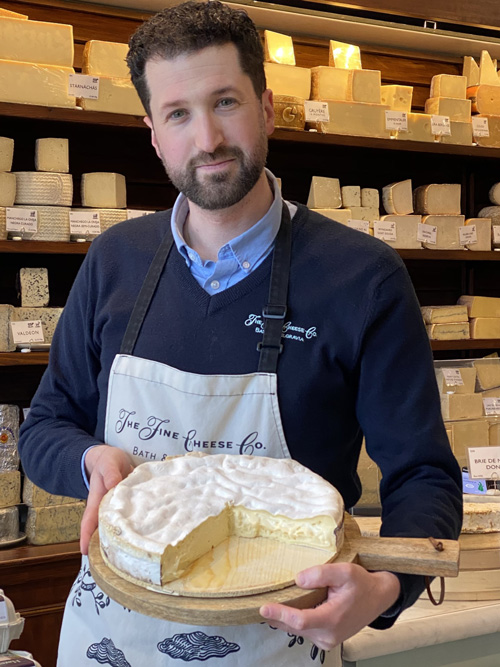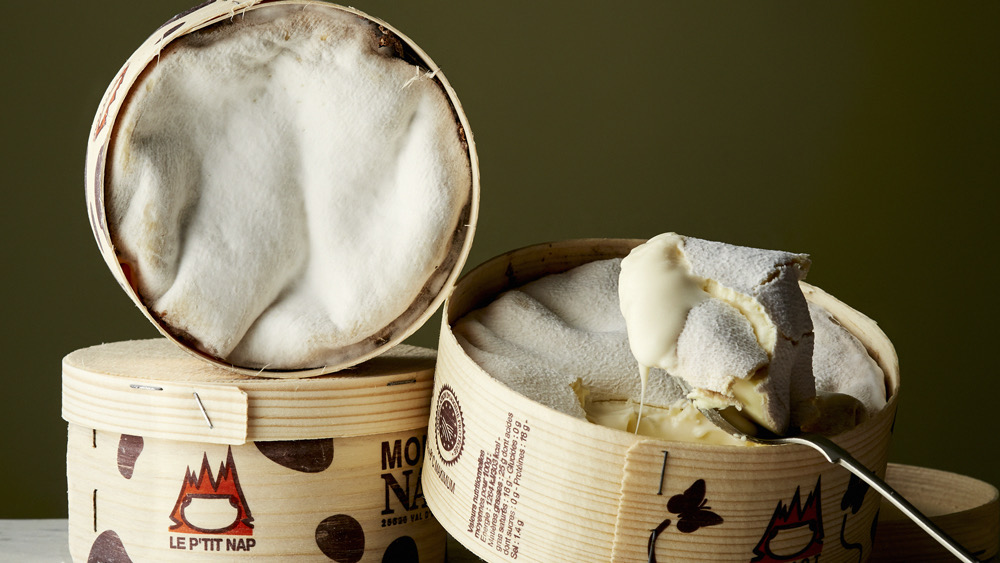Let’s talk about France, baby. Let’s talk about spruce and cheese. Let’s talk about all the goo things and the slathering there’ll be. Let’s talk about Vacherin!
It’s the most wonderful time of the year! There’s a chill in the air, a twinkle in every child’s eye, and cheese shops across the country are beset by an intoxicating aroma of pine, barny funk, and damp cellars. Yes, it’s the season when Mont d’Or – otherwise known as Vacherin du Haut-Doubs – flies off the shelves to be consumed by the bellyful, delighting turophiles with its wintry wonder. Few cheeses can boast of being such an iconic staple of festive tables, and few sport the high demand that has driven Vacherin production from its origins in small dairies to the modern production seen today.
Named for the highest peak in Haut-Doubs, Mont d’Or is an unpasteurised taste of the Jura mountains which form Switzerland’s northwestern border with France and is produced with slight variations in both countries. This is a winter milk cheese, made once milk yields for Comté production has fallen off and the cows have been moved from the alpage to lower pastures (still quite high, at over 700m), to avoid both snow and meadows that are slow to replenish. There, these happy ladies will dine primarily on dried hay made during the summer season, yielding milk that lacks the golden colour of a grass diet but is quite high in fat. It is not the best for making hard cheeses but absolutely perfect for soft cheese production, as the fat will hold more moisture in the structure of the milk. Although most Vacherin producers will still make a bit of winter Comté, a large amount of the milk supply will be diverted to Vacherin production.
Now, about that iconic wooden band, which runs around the cheese: yes, it is absolutely meant to keep the whole thing from falling apart. Records of banded cheeses from the region go back to at least the monastic cheeses of the 12th century, and the tradition still holds. The wood is all local spruce, specifically the cambium layer of bark that has been stripped off and soaked. Once the cheese has been encased in this, it is given a series of several brine washes to attract bacteria and create a favourable environment for the white, peachy mould which populates the rind – both of which create a wonderful pungency while breaking down the cheese into a sumptuous ooze.
A ripe Mont d’Or is, in a word, superbe. Cut the top off the cheese, and the reward is a rich paste that is a couple of calcium atoms short of an instant fondue. Younger cheeses will maintain hints of yoghurt and milk atop piney, custardy brightness, while more developed wheels will burst with eye-rolling flavours of bacon fat, mustard, and wet spruce. In Jura and Vaud, locals will simply eat the cheese as it is. But nobody will bat an eyelash if someone pops a couple of garlic cloves and rosemary sprigs through the rind, splashes some white wine and black pepper on top, and throws it in the oven to watch it bubble and crisp into a molten magnificence that would feel wrong if we didn’t all know that it is so, so right.
About the author

Nick Bayne is a cheese specialist for The Fine Cheese Co., 2015 Champion of the Cheesemonger Invitational, and bronze medallist at the 2023 Concours Mondial de Meilleur Fromager. He is responsible for sourcing and selecting artisan European cheeses to bring to the United Kingdom.
First published in France Today Magazine December/January 2024 Issue.
Latest posts:
- Nine new restaurants awarded Michelin Green Star for sustainability
- 52 restaurants awarded one Michelin Star for 2024
- French bid to stamp out gastro ahead of Olympics
- Michelin recognises individuals in restaurants across France
- Where to go for dessert, according to Michelin








Salivating just looking at the photo.
Salivating, just looking at the photo.